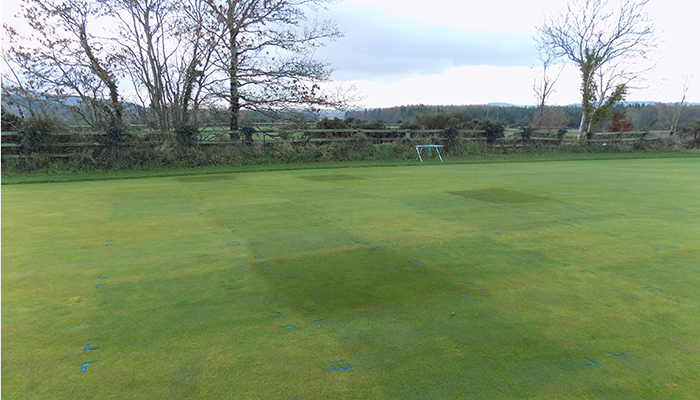Extensive independent trial work carried out by ICL in recent years has repeatedly shown how effective the use of appropriate nutrition, moisture management and sulphate of iron can be at slowing down the rate of development of Microdochium patch disease.
Our recent trials demonstrating this was set up at the Irish Sports Turf Institute in autumn 2018-19. We used annual meadow grass (Poa annua) dominated turf being maintained to create genuine golf green quality surfaces. The environmental conditions during the trial were mild and damp and so highly conducive for the development of Microdochium patch disease.
There were various treatment programmes within this trial. The untreated control plots received no supplementary treatments beyond the routine surface preparations (the best way to encourage disease). The non-fungicidal “ITM” plots received an application of granular fertiliser (SierraformGT K-STEP 6-0-27 +TE @ 25g/m2) followed by monthly applications of the liquid fertiliser Vitalnova Stressbuster (7-0-0 +2Fe @ 30 L/ha) tank-mixed with a specialist penetrant surfactant (H2Pro FlowSmart @ 10 l/ha), 3 applications of dew dispersant (H2Pro DewSmart @ 10 l/ha in Oct, Nov and Dec) and the occasional applications of liquid Iron (Greenmaster Liquid Effect Fe @ 30 l/ha) when disease pressure was considered to be high.

ISTI trial site
The untreated control plots (without any nutritional input or moisture management) suffered greatly from Microdochium patch disease scarring (on average 20%). These surfaces were devastated and their visual and playing qualities would have been extremely poor.
The “ITM” (without fungicide) plots showed that maintaining turf health with appropriate nutrition, managing leaf and soil moisture with specialist surfactants and the well-timed use of liquid Iron was really effective at slowing the rate of development of the disease down. This served to keep the level of scarring to what many people might regard as being an acceptable threshold (below 3% on average). These surfaces showed good turf colour and quality with very little disease activity.
BIGGA members: Watch the Henry Bechelet & Dr Andy Owen BIGGA webinar on managing Micodochium nivale hosted by BIGGA: https://bit.ly/ICLMicNv
